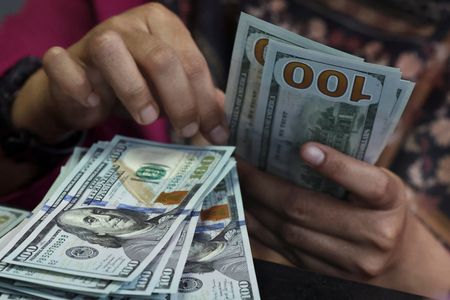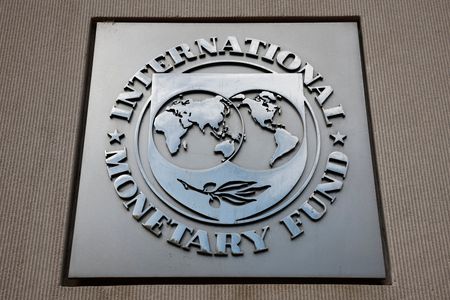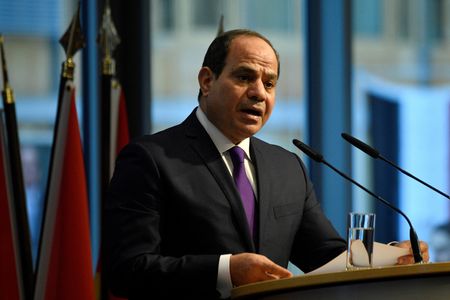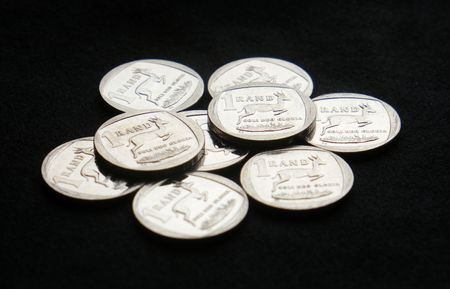By Karen Brettell
NEW YORK (Reuters) -The dollar reached a 15-week high against the Japanese yen on Tuesday as U.S. consumer prices increased by the most in five months in June, while traders also pared expectations on how many times the Federal Reserve is likely to cut interest rates this year.
U.S. President Donald Trump’s tariff policies are seen as increasing price pressures and keeping the Fed on hold as policymakers wait to see their impact. Fed Chair Jerome Powell has said he anticipated prices will rise this summer.
Despite the pick-up in the Consumer Price Index, underlying inflation remained moderate last month.
“Tariffs are in the data, but it’s not as devastating as many feared,” said Brian Jacobsen, chief economist at Annex Wealth Management in Menomonee Falls in Wisconsin.
Fed funds traders are pricing in 44 basis points of cuts by year-end, down from around 48 basis points before the data, with the first rate reduction still expected in September.
“A slightly softer-than-expected June core inflation reading keeps alive the chances of a September Federal Reserve interest rate cut, but the risk is that we get less benign prints for July and August,” James Knightley, chief international economist, US at ING said in a note. “That means we will need to see clear evidence of softer jobs figures to trigger Fed action before December.”
The dollar gained broadly in what was also a seen as a technical move as the greenback consolidated from a selloff that has sent the index down by around 9% this year.
Brad Bechtel, global head of FX at Jefferies, noted that the dollar index is approaching technical targets including the 50-day moving average and the 100 price level.
“I think some of this is just your normal run-of-the-mill technical consolidation,” he said.
Nvidia was also set to resume artificial intelligence chip sales to China, in a sign of improving trade relations.
“Some of that softening of China trade rhetoric is helping things at the margin,” Bechtel said.
The euro was last down 0.51% on the day at $1.1603, the lowest since June 25. Against the Japanese yen, the dollar strengthened 0.77% to 148.84, the highest since April 3.
Sterling weakened 0.28% to $1.3389, the lowest since June 23.
The dollar weakened after Trump in April announced larger than expected tariffs, but then delayed many of the levies pending negotiations with trading partners.
Trump last week announced higher tariffs would come into effect on August 1 for imports from a range of countries, including Mexico, Japan, Canada and Brazil, and the European Union, though market reaction this time was relatively muted.
“The market is ignoring the tariffs until it becomes clear whether there’s going to be sort of a major escalation like there was with China in April or if this is just yet another step on the way to some sort of deal,” said Steve Englander, head of global G10 FX research and North America macro strategy at Standard Chartered Bank’s NY Branch.
In addition to tariffs and inflation, markets are also focused on the U.S. fiscal and debt outlook, and the pressure the Trump administration is placing on Powell as he keeps rates on hold.
Trump said on Tuesday that consumer prices were low and the Fed should bring down interest rates now.
Powell has also asked the U.S. central bank’s inspector general to review the costs involved in the renovation of its historic headquarters in Washington, as Trump administration officials intensify their criticism of how the Fed is being run.
U.S. Treasury Secretary Scott Bessent said on Tuesday that a “formal process” is already starting to identify a potential successor to Powell, whose term will end in May.
Bitcoin fell 3.04% to $116,571. It hit a record $123,153 on Monday as investors bet on long-sought policy wins for the industry this week, which has been dubbed “crypto week” by U.S. Republicans.
(Reporting by Karen Brettell; Additional reporting by Chuck MikolajczakEditing by Tomasz Janowski and Nick Zieminski)









